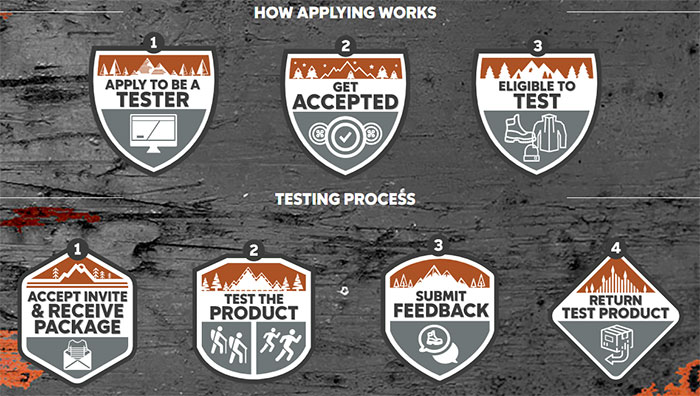Ever watched an HGTV show, Googled how they make the houses look so good, and then wondered how to start a home staging business?
Well, you don’t have to wonder anymore!
Home-staging is the type of business that you can do if you have an aptitude for interior design but don’t have formal training or don’t want to pursue it anymore and are looking for an alternative business where your skills are still usable.
In today’s article, you’ll get to learn all about starting your own home staging business: what to expect, pros and cons, all the steps, and all your burning questions answered.
Real Estate Staging: What is a Home Stager?
As you might have guessed, a home stager is responsible for arranging furniture, decorating a house, and everything else to tweak a house’s appearance with the aim of showcasing its strengths and potential to homebuyers.
Home stagers are in demand by realtors. A recent study by the National Association of Realtors found that:
- 83% of buyers’ agents they talked to said that staging a home made it easier for a buyer to visualize the property as their future home
- 25% of buyers’ agents said that staging a home increases its dollar value by 1% to 5%
- A total of 53% of buyers’ agents said that staging a home decreases the time a property spends on the market
A great thing about being in the home staging business is that a college degree isn’t necessarily required, though having one is an advantage as far as building trust with clients and negotiating your rates.
In fact, one of the most well-known home staging success stories out there started by accident.
Meridith Baer, a professional screenwriter of 18 years, happened to use her friend’s house that has been on the market for a year as a temporary “home” of her 250 house plants and furniture while she moved houses.
Days later, her friend ended up selling that “staged” home for $500,000 over its listing price.
Baer’s first gig was sheer luck, but it opened a new world for her as brokers began seeking her real estate staging services so much so that she quit her job and started her home-staging business Meridith Baer Home.
By 2013, Baer has landed her own HGTV show “Staged To Perfection,” and as of 2020, Meridith Baer Home is worth over $100 million.
Pros and Cons of Starting a Home Staging Business
Before you take the plunge into starting this business, consider the pros and cons first.
PROS
- Low startup costs — You don’t have to maintain inventory (at least, when you’re starting out) and you have minimal supplies.
- Unleash your creativity — The business lies in your vision and creativity and rarely does a business allow you to have a great deal of creative freedom.
- No degree required — You may have to get business licenses and accreditation from organizations, but you can start a home-staging business even if you don’t have a degree.
- Word-of-mouth marketing — Once you establish a rapport with a few real estate agents, mortgage brokers, and others in real estate, they’ll spread the word.
CONS
- Difficulty getting first clients — Your first clients are the hardest to get and yet the most important because you’ll build your portfolio on them.
- Demanding schedule — You have to be in and out of a house in a matter of days, and this may require you to work weekends and nights.
- Conflicts with home sellers — Those who’re selling their homes may not like what you’re doing with their house and simply not believe that you’re making it more sellable. On the other hand, they may like your style too much that they steal or damage stuff that you brought in.
- The temptation to undercharge — Especially when you’re starting out, it’s tempting to charge less or sometimes nothing just to get a job. DON’T. If you don’t get paid, you simply can’t grow your business.
How To Start A Home Staging Business
Once you’re 100% sure that you want to explore this line of business, follow the steps how to start a home staging business:
1. Learn everything you can about the business.
Starting any business requires research. Learn, learn, learn everything you can about home staging.
Educate yourself as well about the startup costs for your home-staging business.
It depends on what services you plan to offer and what type of marketing you want to start with.
You may want to be a home-staging consultant initially and simply give expert advice to home sellers on how to make their home attractive to buyers. It doesn’t involve too much in terms of cost.
When you move on to filling empty homes with furniture and décor, you can rent these initially and then build up your inventory of furniture, decor, and other supplies as you go.
If you want to show off your skills and find it hard to land a gig, you can stage a house for free once as a testing ground and as something to photograph and add to your portfolio. While this would mean that you’ll be shouldering money upfront, it’s only an option if you wish to jump-start your home staging business.
Consider your initial marketing as well. Are you going to use social media and advertise there, or do you want to build a website early on? Can you afford it?
2. Learn about your local market.
The target market for a home staging business includes homeowners who are trying to sell and real estate agents doing the actual selling.
It pays to know your local real estate agents and find out who’s selling their house and whether you might be a good fit with them.
However, you’re probably not the only home stager in town.
Check out your local competition. Who are the other home stagers in your area? Are they any good?
Try to find out how much they charge and visit any houses they’ve staged.
Finally, if there isn’t any demand in your city, are you willing to explore other housing markets? Which ones?
3. Determine your pricing structure.
Before starting any project, home stagers hold an initial one- to two-hour consultation, which usually costs around $150 to $600. As I’ve mentioned, you can start offering this as a standalone service to keep costs down while getting your feet wet in the home staging business.
Some home stagers offer a rearranging and decluttering service, in which they work solely with the existing furniture in the house, which is a flat fee of around $800 to $1000. But if the house is unfurnished, you’d have to rent furniture or bring in your own.
Home sellers shoulder the cost of renting this furniture from you (which in turn you can rent from a furniture rental company), which you can price at around $500 to $600 per room per month, if the house is completely bare. This is on top of your staging fees.
You can then decide whether to charge per hour, which is normally $40 to $150 per hour.
Alternatively, you can charge per project, which is on the average $400 to $700 per room per month, which comes out to an average of around $2000 per house per month.
Where your fees fall in these ranges depends largely on the condition of the property, your location, your expertise, and your experience.
Painting, lighting, refinishing cabinets and other surfaces, and professional deep cleaning aren’t really your domain, but you can do tie-ups with companies that provide these services and recommend them to home sellers for a small finders’ fee.
4. Complete legalities.
Now that you’ve explored your chances of breaking into the local housing market, weighed the pros and cons, and decided on your pricing structure, you can now fix paperwork needed in running this business.
- Decide on a name for your business.
- Form an LLC.
- Register for your taxes.
- Open a separate bank account and credit card for your business.
- Obtain state and local business licenses.
- Hire lawyers to write contracts.
- Buy business and liability insurance.
Also, it’s not really required, but being a member of the Real Estate Staging Association (RESA) can give you an edge.
They offer continuous training, you’ll get listed in their directory of home stagers, you get to network in their events, and you can take advantage of discounts to various furniture, service, and supplies providers.
5. Connect with local brokers and contractors.
Begin networking.
Reach out to contractors, real estate agents, homeowners selling their properties by themselves, and others involved in the local real estate market.
These people are more than happy to welcome you into the business, mainly because home stagers who are good at their job help houses sell quickly.
Maintaining these connections is critical to the long-term success of your business.
6. Compile your furniture and supplies.
Renting your furniture reduces your overhead greatly. Not only don’t you have to manage your inventory but you also don’t have to spend for transporting and storing them.
When you’re starting out, be on the hunt for furniture rental companies that has pieces that match your style.
As you expand your business, start building your inventory with pieces you find at garage sales or thrift stores that don’t cost too much and don’t take too much space.
After a while, you can think about whether you want to buy and store your own inventory or continue renting.
The main advantage of having your own inventory is that you’re not dependent on another supplier for your needs; you’re ready to work anytime on your own schedule.
The disadvantages are logistics, inflexibility, and cost. As I mentioned, you’ll be responsible for transporting the furniture and storing them, either at your garage or in a dedicated storage space (which is added overhead each month).
Also, your options will be limited as far as creativity is concerned. If you’re envisioning another look for a particular house, you need to either buy or rent other furniture.
This brings us to the cost; stocking up on your inventory will cost you upfront as well as monthly.
7. Market Your Business
Word-of-mouth marketing through your network of real estate agents and brokers is powerful, but not enough to market and promote your home staging business.
Here are some ways to market your business both online and offline.
Online Marketing
- Define your brand and stick to it.
- Build your own website with your portfolio and high-quality photos.
- Optimize your website for local searches using keywords that local brokers and home sellers may use to find home stagers online.
- Learn to use social media to spread the word about your business. Instagram (photo-heavy) and Facebook (to be visible to local users) are most useful.
Offline Marketing
- Prepare a portfolio and always have it with you to show.
- Prepare business cards to give out.
- Visit open houses to meet real estate agents and home sellers.
- Attend real estate conferences.
8. Grow your business.
After you get your first few projects, it’s tempting to bask in that glow of jobs well done.
But for you to truly be able to grow your business, you need to continue building, improving, and promoting your business.
Collect testimonials. Every time you land a home staging gig, make sure to get client feedback and testimonials, take before and after photos, and ask permission if you could post them online and include them in your portfolio.
Think about expanding. As I mentioned, deep cleaning, painting, and refinishing aren’t really your area, but if you can expand to include them, you can then offer an all-in-one service, which is convenient for everyone.
Never stop learning. Continue taking classes and being updated on the latest trends when it comes to aesthetics and design. As a home stager, you should be able to mesh classic design techniques with modern, cutting-edge designs.
Share your knowledge. One way to generate buzz for your business is to start blogging about your home staging gigs. Talk about your projects, showcase before/after pictures, and provide useful tips. Doing this makes you an authority in the field. Squeeze in some keywords into your blog posts and Google is likely to give your website a lot of love.
Get paid for your knowledge. You can eventually expand to creating courses on how to stage a home, either for homeowners or for aspiring home stagers.
Start Your Home Staging Business!
There are plenty of statistics indicating that home staging businesses have a future.
I hope this post has inspired you to start your home-staging business soon!
In between jobs, you can even put your decluttering and rearranging skills to work as a professional organizer.
Are you planning to start your home staging business? Has this post helped? What obstacles are you encountering? Sound out in the comments!




























